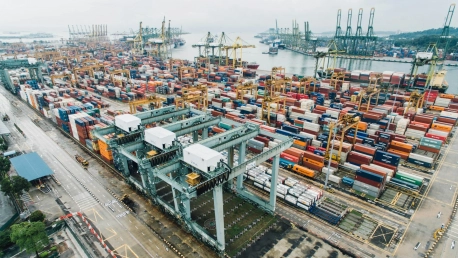The logistics sector is gearing up for a revolutionary transformation with the Logistics Automation Market on a trajectory to leap from USD 32.7 billion in 2023 to a staggering USD 67.5 billion by 2031. With the integration of cutting-edge technologies such as robotics, artificial intelligence (AI), machine learning, and the Internet of Things (IoT), a new era of efficiency, agility, and cost-effective operations is on the horizon. These advancements are carving the path for state-of-the-art automated warehouses, intelligent inventory management systems, as well as autonomous vehicles and drones. Notably, the burgeoning e-commerce industry, with its demand for swift and accurate deliveries, stands as a prime beneficiary of this technological tide.In light of the COVID-19 pandemic, the resiliency of supply chains has come under intense scrutiny, triggering a rapid embrace of digital transformation. Industry titans such as Murata Machinery, Honeywell, and Jungheinrich are already making significant strides, offering sophisticated logistics automation solutions. The pertinence of a meticulous report that elucidates the market cannot be overstated — it casts a spotlight on these key players, examines the pandemic’s impact, and weighs in on the industry’s bounce-back potential post-COVID.
The Technological Vanguard
Delving deeper into the mechanics of this market, one encounters an assortment of components grouped into hardware, software, and services. The hardware segment, boasting autonomous robots and intricate sorting systems, alongside automatic identification and data capture (AIDC) tools, is foundational to warehouse automation. Meanwhile, software solutions, spearheaded by Warehouse Management Systems (WMS) and Transportation Management Systems (TMS), provide the digital backbone essential for orchestrating complex logistics networks. Services, not to be outdone, encompass invaluable domains such as consulting and maintenance, ensuring that the machinery and software operate in seamless synergy.The scope of logistics automation is not confined to warehousing and transportation alone; it infiltrates and enhances myriad functions across different sectors. Industries like healthcare, automotive, and retail are already leveraging these automated systems for inventory management and beyond. This broad applicability underscores the transformative potential of logistics automation, presenting a multiplicity of functions that cater to diverse types and scales of logistics operations. The boom in automation signifies not just a radical shift in how goods are moved but also how industries will evolve to accommodate these changes.
Market Dynamics Unveiled
The logistics industry is on the brink of a major shift, with forecasts predicting the Logistics Automation Market to surge from a USD 32.7 billion valuation in 2023 to an impressive USD 67.5 billion by 2031. This growth is fueled by the integration of advanced technologies like robotics, AI, machine learning, and IoT, paving the way for heightened efficiency, speed, and cost savings. These technologies are instrumental in developing cutting-edge automated warehouses, smart inventory systems, and self-operating vehicles and drones, which are increasingly crucial to the booming e-commerce sector demanding quick, reliable delivery.The pandemic highlighted the need for resilient supply chains, accelerating digital transformation within the industry. Leaders such as Murata Machinery, Honeywell, and Jungheinrich are at the forefront, innovating within logistics automation. A detailed market report is vital, shining a light on these prominent companies, assessing the pandemic’s impact, and exploring the sector’s recovery post-COVID.









